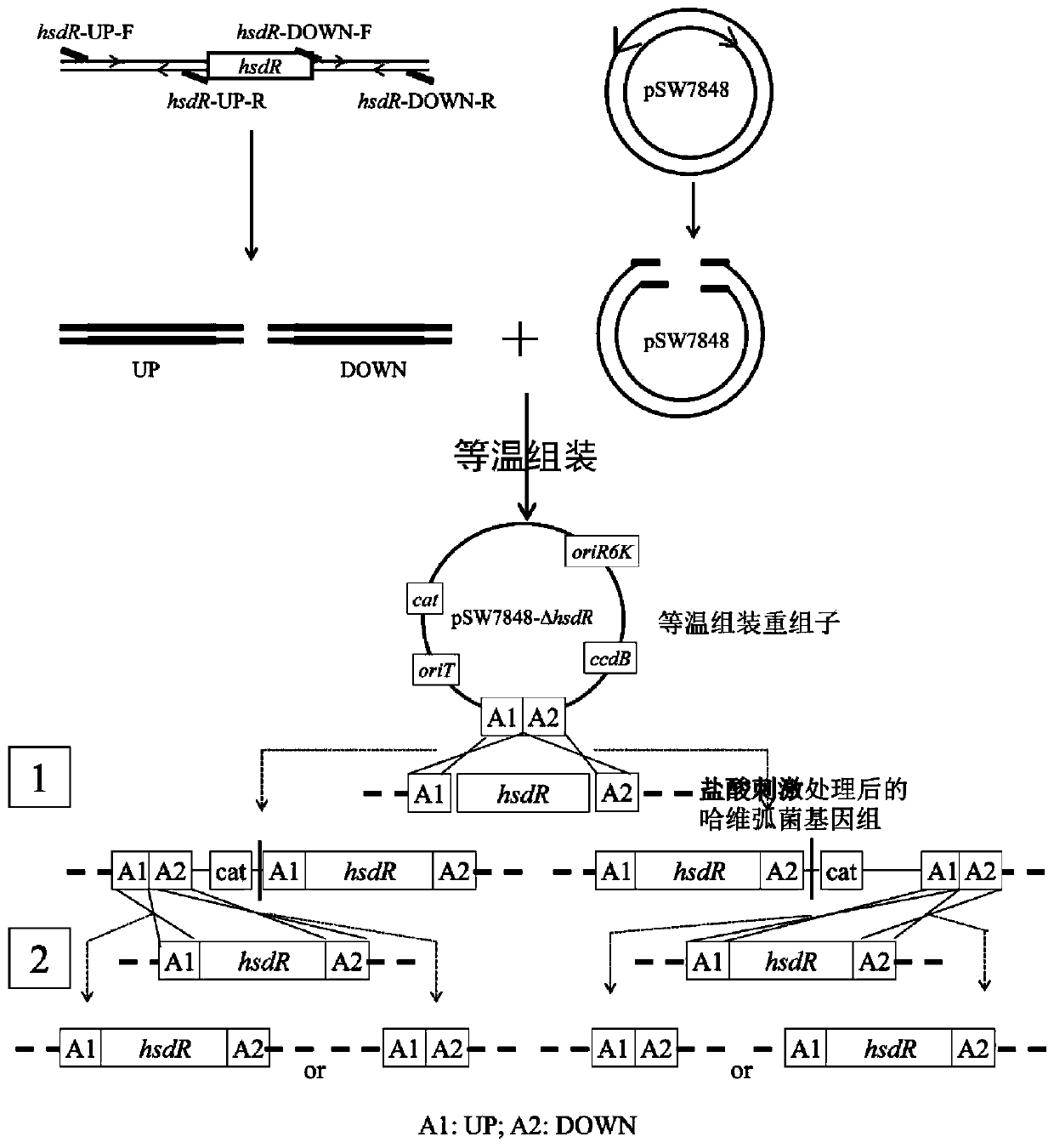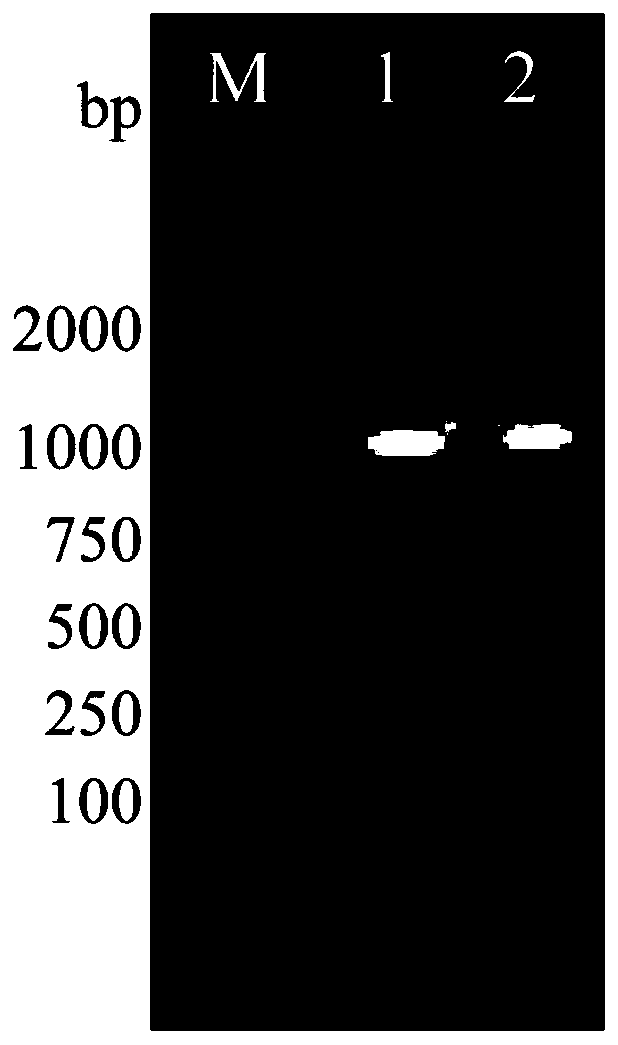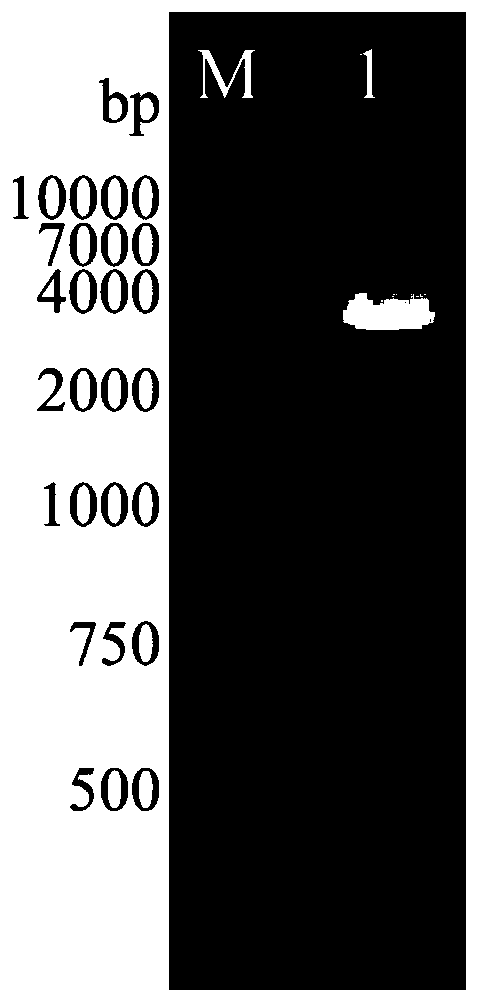Vibrio harveyi homologous recombination gene knockout method based on hydrochloric acid stimulation
A technology of Vibrio harveylius and gene knockout, which is applied in the field of microorganisms, can solve the problems of hindering and restricting genetics, and achieve the effects of not being prone to polar effects, simple operation, and accurate functional analysis
- Summary
- Abstract
- Description
- Claims
- Application Information
AI Technical Summary
Problems solved by technology
Method used
Image
Examples
Embodiment 1
[0058] Stimulation treatments of different hydrochloric acid concentrations and different time periods were performed on the early logarithmic recipient bacteria liquid, indicating that hydrochloric acid stimulation improved the conjugative transfer efficiency of Vibrio harveyi (Table 1).
[0059] 1. Preparation of donor bacteria E.coli GEB883
[0060] (1) Streak the E.coli GEB883 containing the expression plasmid pSCT32 preserved in glycerol on an LB solid plate containing 20 μg / mL chloramphenicol and 0.3 mM DAP, and culture overnight at 37°C;
[0061] (2) Pick the monoclonal colonies formed by the activated cells in (1), inoculate them in LB liquid medium supplemented with 20 μg / mL chloramphenicol and 0.3 mM DAP, and cultivate them at 37°C and 200 rpm until the early logarithmic OD600nm =0.3~0.7;
[0062] 2. Preparation of recipient bacteria Vibrio harveyli
[0063] (1) Configure an LBS solid plate to activate Vibrio harvey for overnight culture at 28°C;
[0064] (2) Pick...
Embodiment 2
[0080] In view of the results of Example 1, the gene hsdR (type I restriction enzyme, R subunit) was taken as an example to illustrate a step based on the hydrochloric acid stimulation method to realize homologous recombination gene knockout of Vibrio harveii (the specific operation process is as follows: figure 1 shown).
[0081] The hsdR gene (its nucleotide sequence is as the 534th to 3788th base of SEQ ID NO.1) ORF has a full length of 3255bp, and can encode the type I restriction modification system R subunit HsdR consisting of 1084 amino acids. HsdR is one of the host specificity determinants (hsd) of the type I restriction modification system, responsible for the restriction subunit (R) of unmethylated and mismethylated nucleotide sequences. Bacterial horizontal gene transfer has certain regulatory effects.
[0082] The hsdR gene knockout strain obtained in this study provides a premise for in-depth research on the function of the hsdR gene, and the elucidation of the ge...
PUM
 Login to View More
Login to View More Abstract
Description
Claims
Application Information
 Login to View More
Login to View More - R&D
- Intellectual Property
- Life Sciences
- Materials
- Tech Scout
- Unparalleled Data Quality
- Higher Quality Content
- 60% Fewer Hallucinations
Browse by: Latest US Patents, China's latest patents, Technical Efficacy Thesaurus, Application Domain, Technology Topic, Popular Technical Reports.
© 2025 PatSnap. All rights reserved.Legal|Privacy policy|Modern Slavery Act Transparency Statement|Sitemap|About US| Contact US: help@patsnap.com



